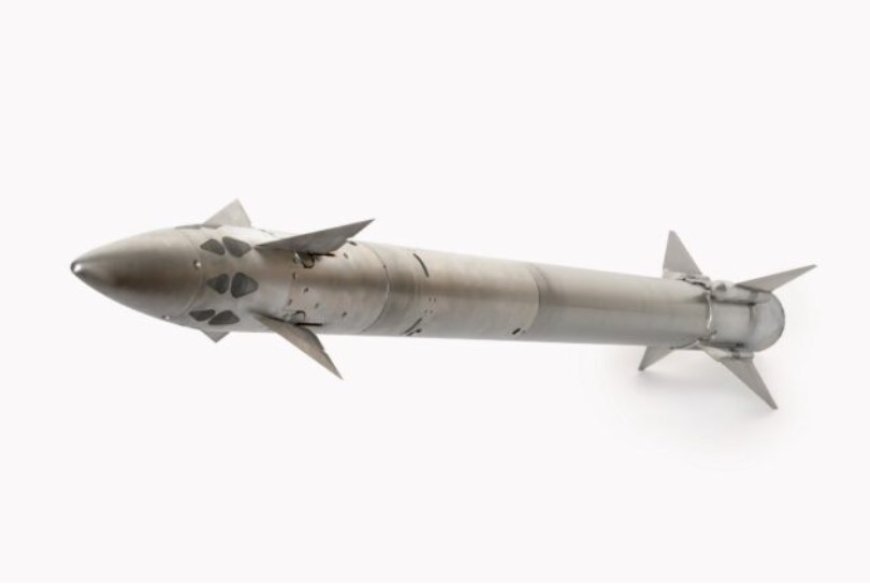India Eyes LMM “Martlet” Missile: A Strategic Leap in its Defence Arsenal

In a significant development for India’s defence modernisation, reports suggest that India is exploring the acquisition of the LMM (Lightweight Multi-Role Missile), commonly known as “Martlet.” This move reflects a broader strategy to bolster precision strike capabilities across air, sea, and land domains — especially for countering evolving asymmetric threats such as drones and light fast attack craft.
What Is the Martlet / LMM Missile?
The Martlet (LMM) is a 13-kg, short-to-medium range missile system developed by Thales UK. It features a two-stage solid propellant design and achieves speeds of about Mach 1.5. One of its key strengths is multi-platform adaptability — it can be launched from helicopters, naval vessels, armoured vehicles, or portable ground launchers.
Guidance modes include laser beam riding and optional variants with infrared or GPS/INS systems, allowing flexibility in different mission profiles. Its warhead is designed for low collateral damage, combining blast fragmentation, shaped charge, and proximity fuse effects.Because of its light weight and recoil-free launch, Martlet is especially suitable for smaller platforms like India’s LCH Prachand attack helicopter, giving it an edge in high-altitude or constrained theatres.
Why India Is Considering Martlet: Strategic Motivations
-
Fill Gaps in Precision Strike & Air Defence: As unmanned aerial systems (UAS), swarms of drones, and fast inshore attack craft (FIACs) proliferate, India needs versatile weapons that can respond rapidly to varied threats. The Martlet offers a flexible solution against light aerial and sea threats.
-
Augment Indigenous Platforms: India’s homegrown LCH Prachand currently carries weapons like the Helina Dhruvastra anti-tank missile and short-range air-to-air missiles (e.g. Mistral-2). The Martlet could supplement its arsenal, especially for anti-UAV, maritime, or light armour roles.
-
Leverage India–UK Defence Ties: India already has defence partnerships with the UK via projects like the LBRM (Laser Beam Riding MANPAD) co-development with Thales and Bharat Dynamics. The potential Martlet deal could follow in the same “government-to-government” and transfer-of-technology framework.
-
Regional Balance & Naval Reach: In the Indian Ocean Region (IOR), littoral threats — small attack craft, drone swarms, hybrid adversary tactics — demand responsive, precise countermeasures. Mounting Martlet on patrol vessels or coastal platforms could supplement India’s layered deterrence.
Challenges, Risks & Considerations
-
Cost vs Quantity: Acquiring advanced missiles is expensive. India will have to balance how many units to procure and whether to localise production.
-
Integration Complexity: Ensuring compatibility with Indian helicopters, naval systems, and command & control networks could prove technically challenging.
-
Supply Dependencies & Sovereignty: Relying on foreign technology risks supply disruptions. A strong transfer-of-technology component is essential for long-term viability.
-
Redundancy with Existing Systems: India already fields systems like S-400, Barak-8, and indigenous missile programs. The unique niche for Martlet must be clearly defined.
Impact on India’s Defence Posture & Future Prospects
If India proceeds, it would strengthen its multi-domain precision strike capability, especially in contested coastal zones and mountainous regions where heavier systems are impractical. The integration into platforms like LCH Prachand or coastal naval vessels could give India more flexibility in countering asymmetric threats.
Moreover, a joint India–UK production or localisation plan could also bolster India’s domestic defence industry under the “Make in India / Aatmanirbhar Bharat” vision. The strategic partnership could extend beyond acquisition — into R&D, upgrades, and co-production.
Conclusion: A Tactical Boost with Strategic Implications
India’s potential buy of the LMM Martlet missile signals more than just another arms purchase. It reflects a shift toward agile, precise, and platform-agnostic weapon systems tailored for future warfare landscapes. While challenges remain — from integration to cost to strategic fit — if executed wisely, the Martlet could become a critical arrow in India’s defence quiver: fast, accurate, and versatile across air, sea, and land fronts.
Would you like me to also generate an SEO-friendly version or add suggested images/infographic ideas for this blog?
What's Your Reaction?
 Like
0
Like
0
 Dislike
0
Dislike
0
 Love
0
Love
0
 Funny
0
Funny
0
 Angry
0
Angry
0
 Sad
0
Sad
0
 Wow
0
Wow
0




























